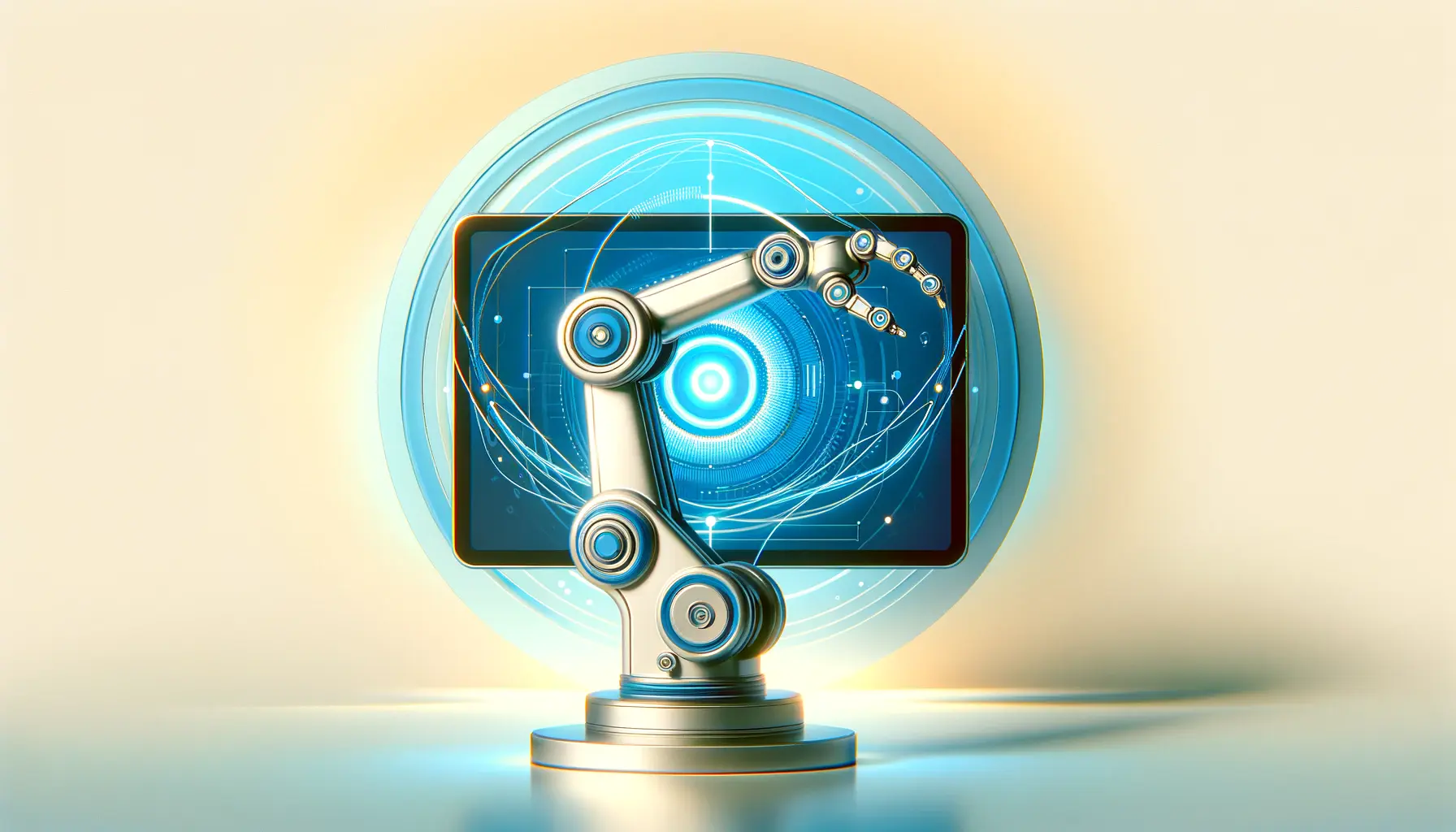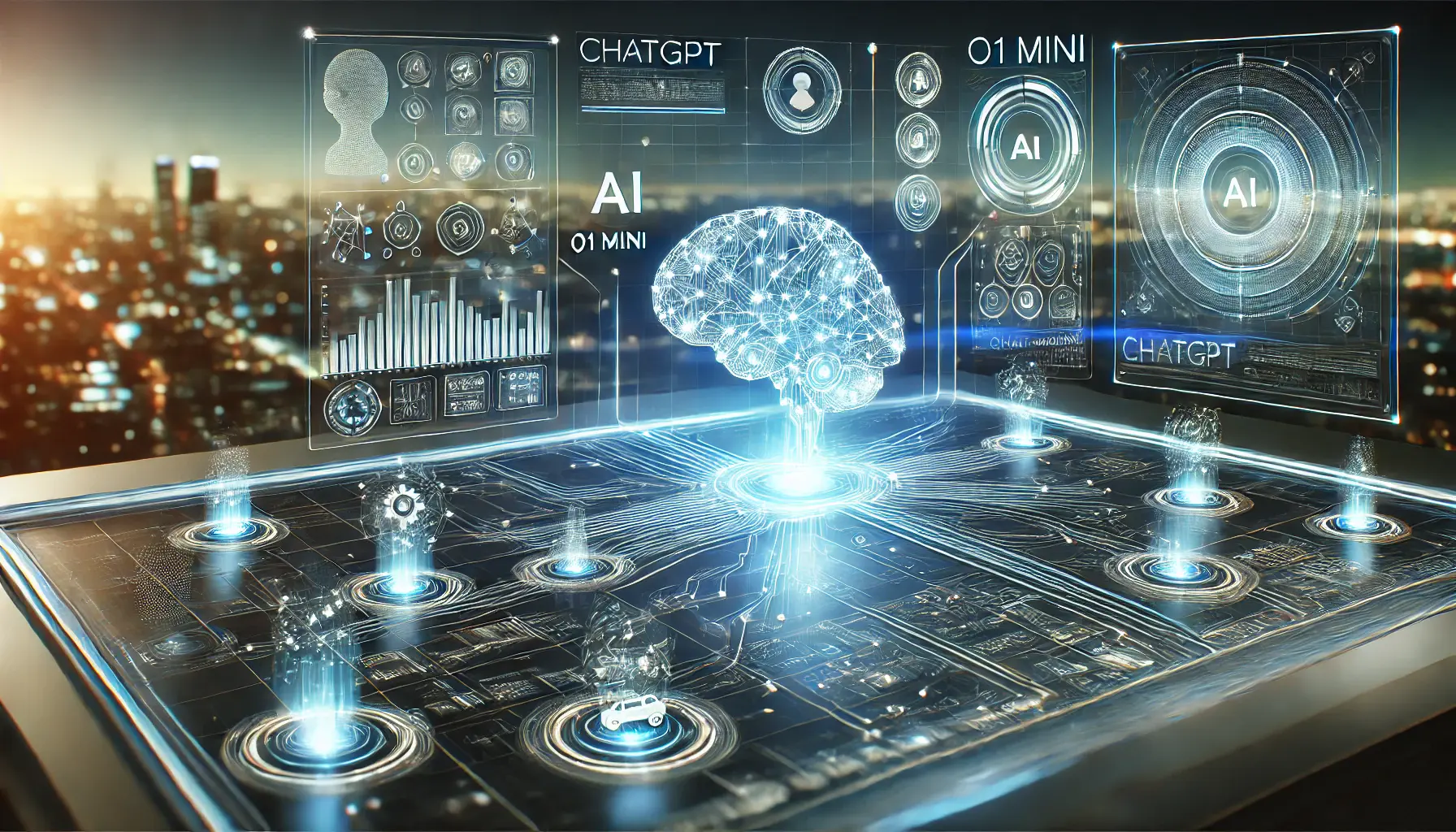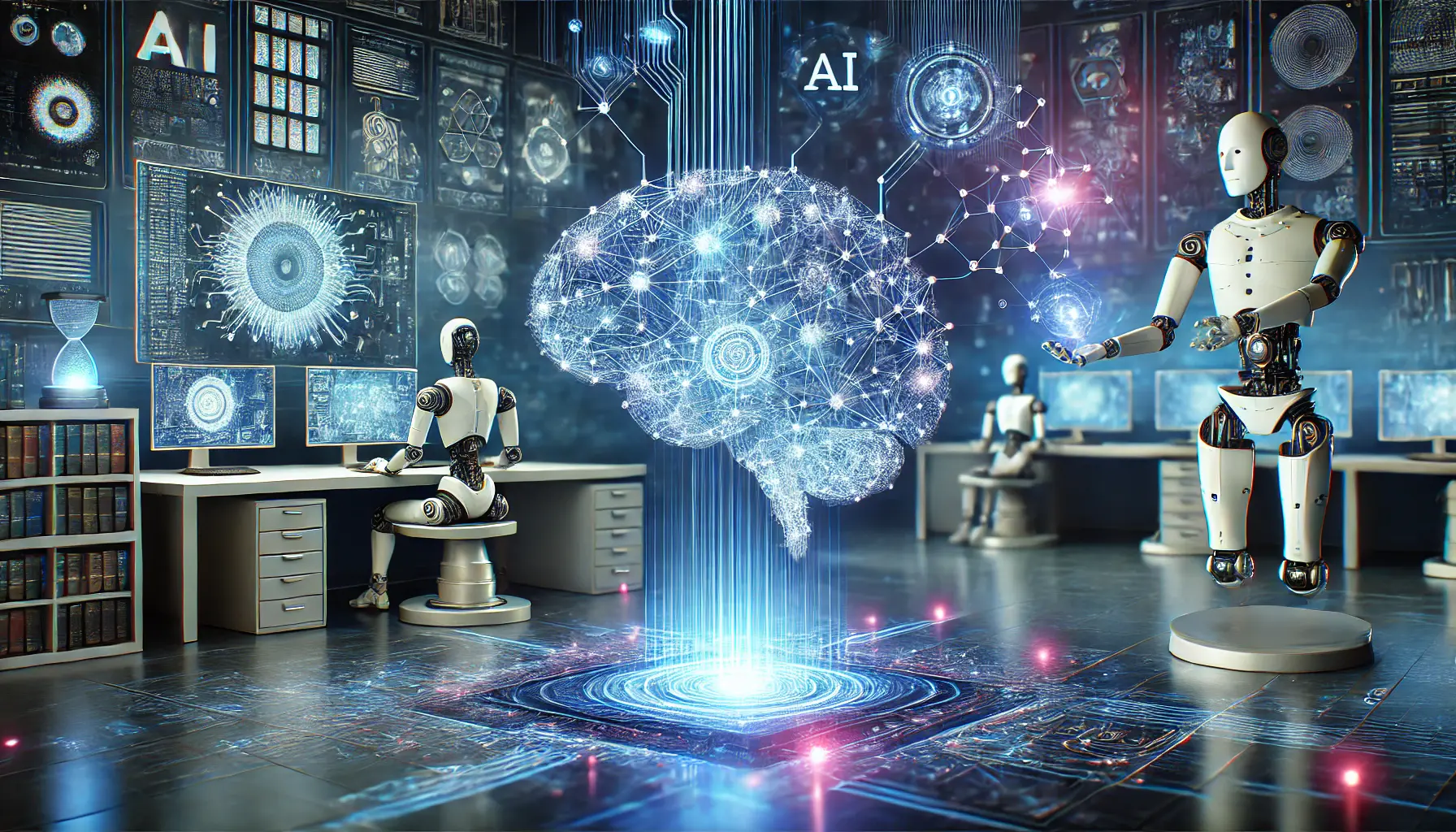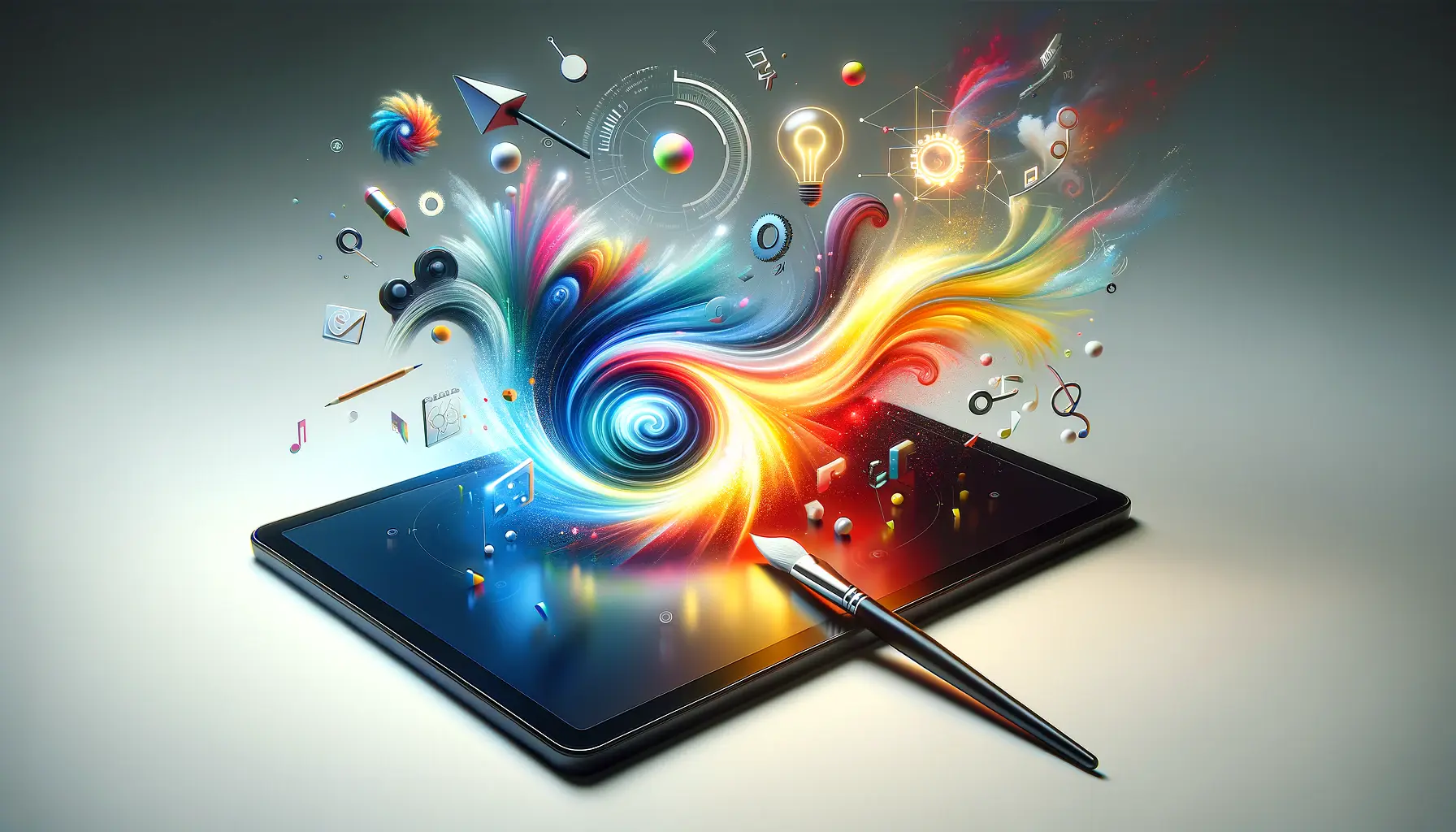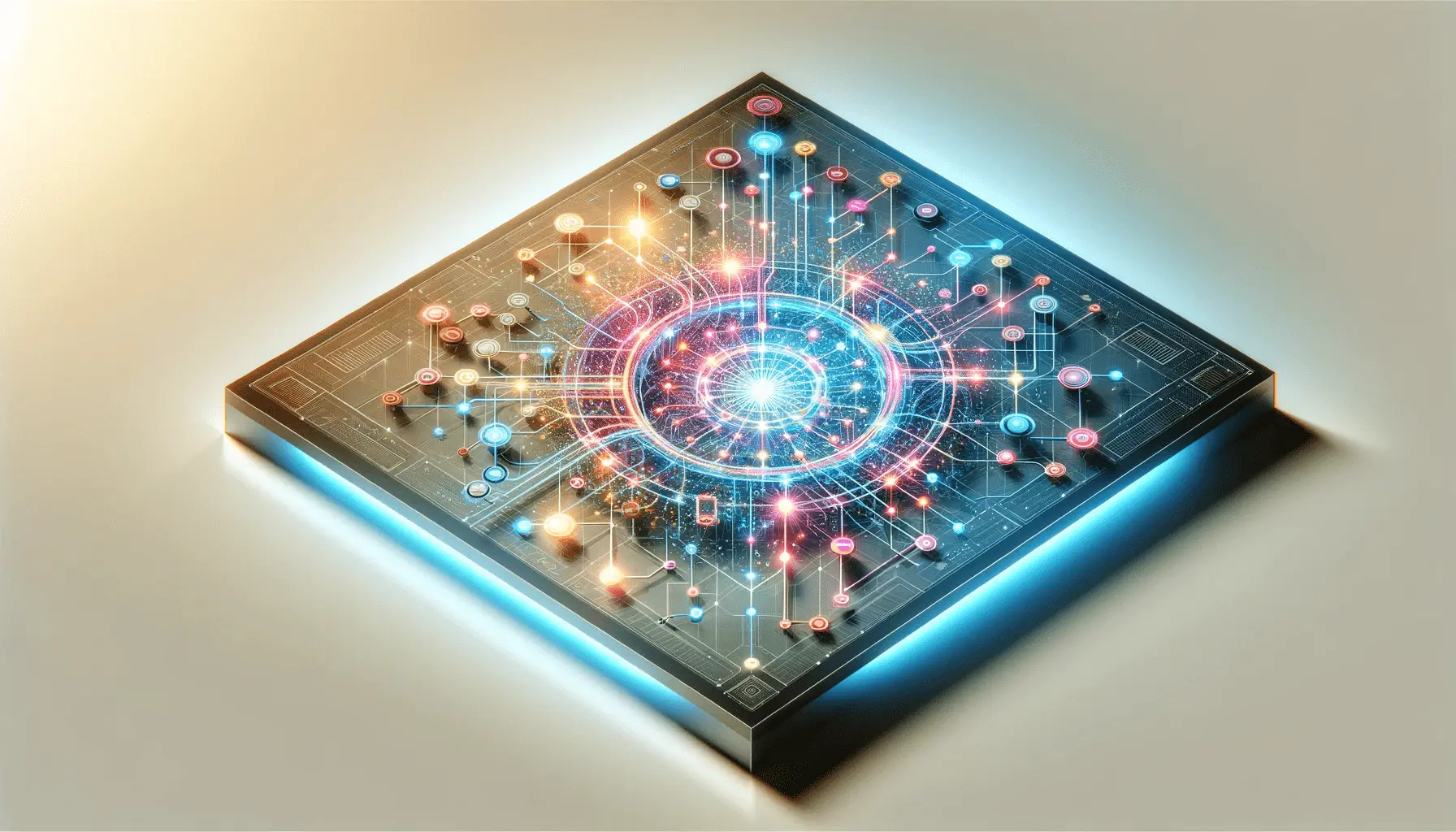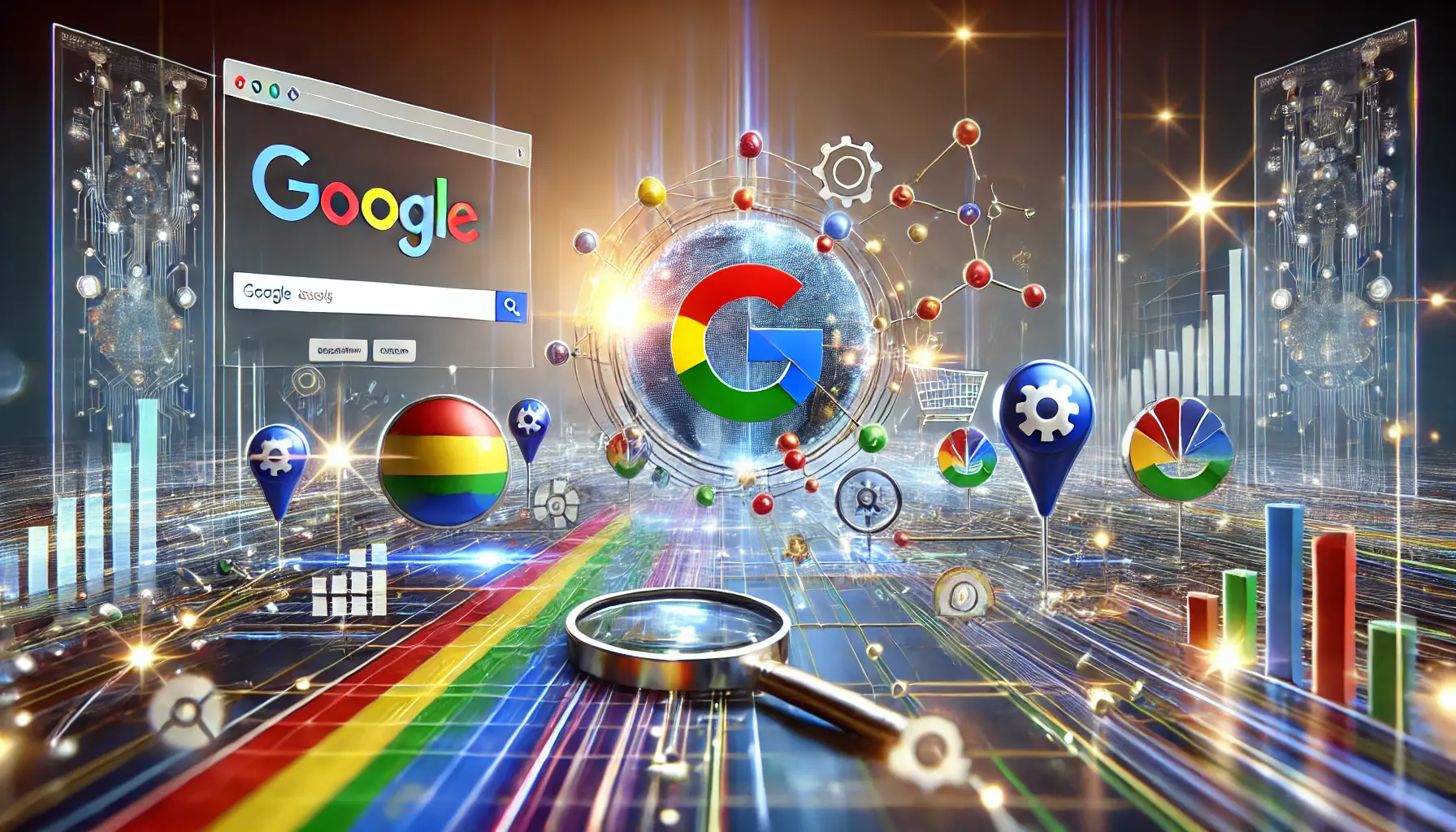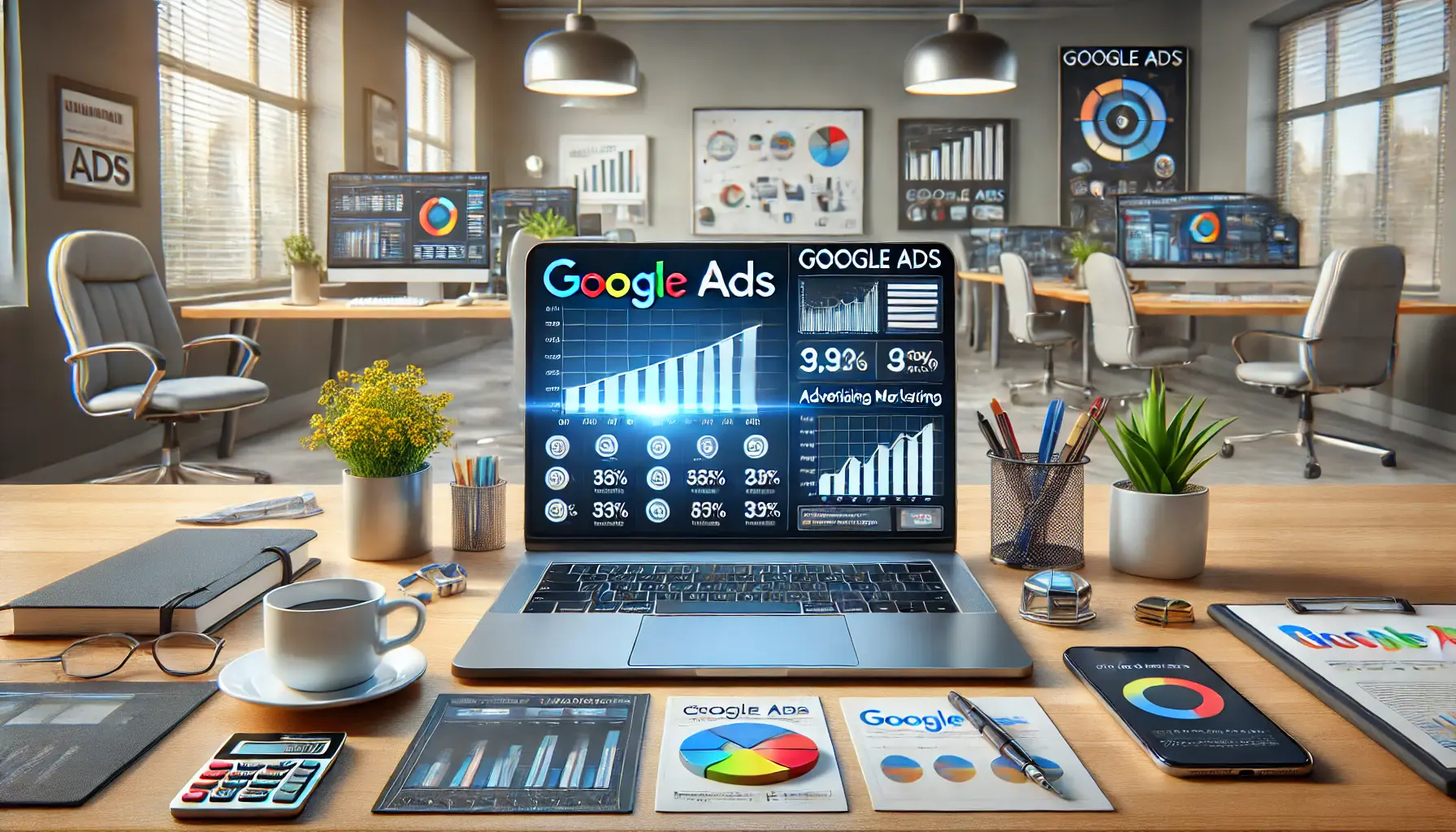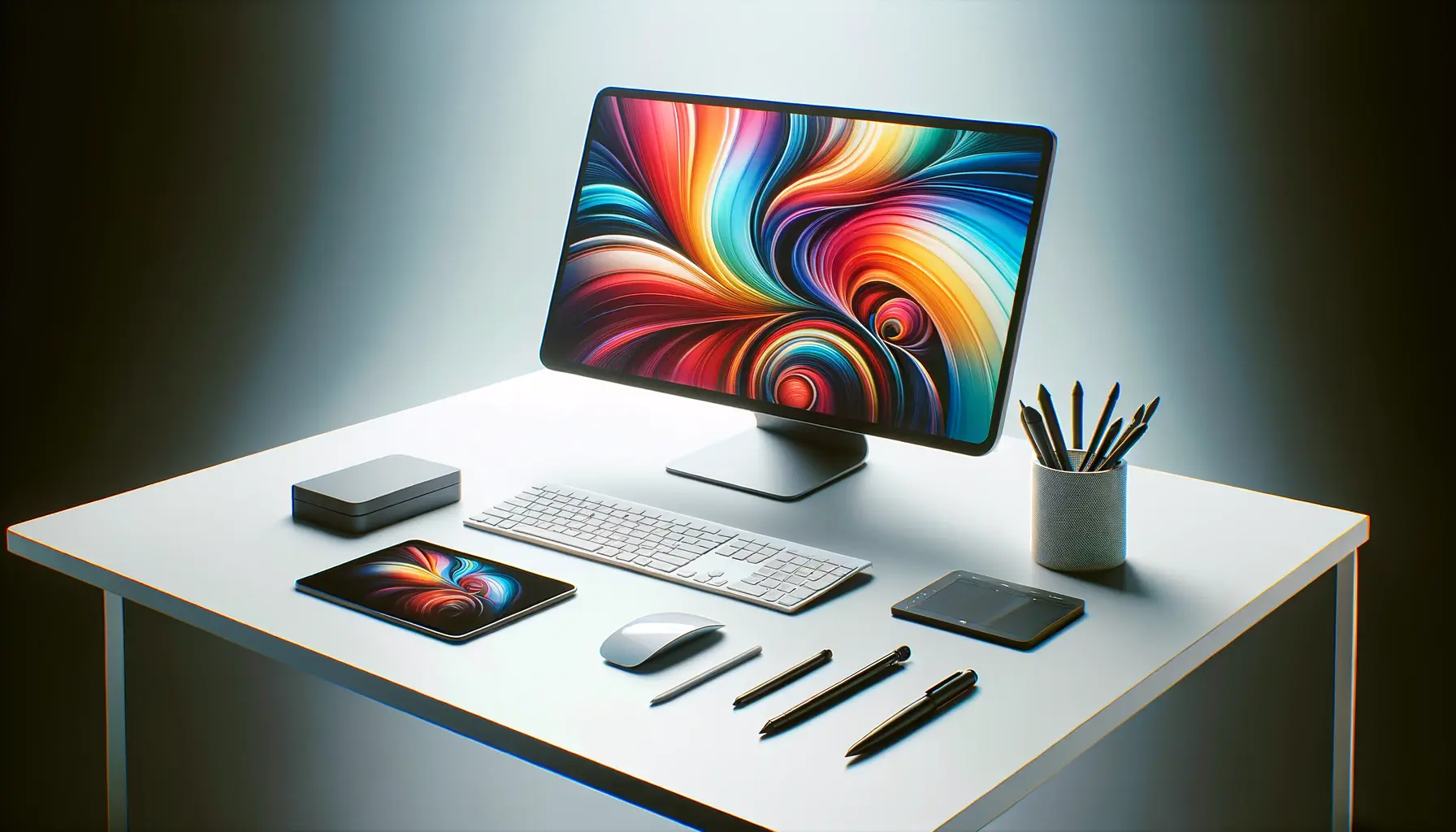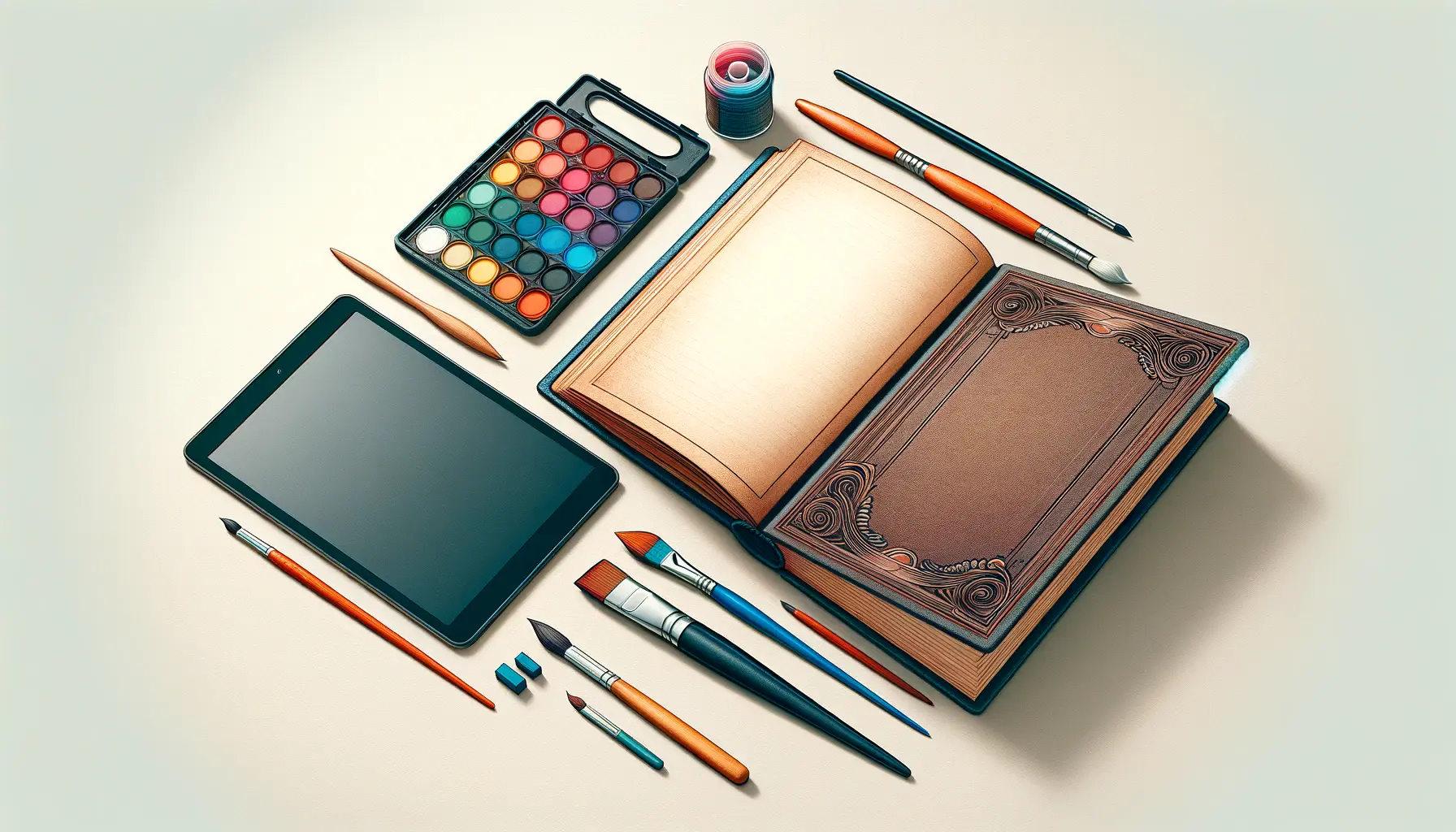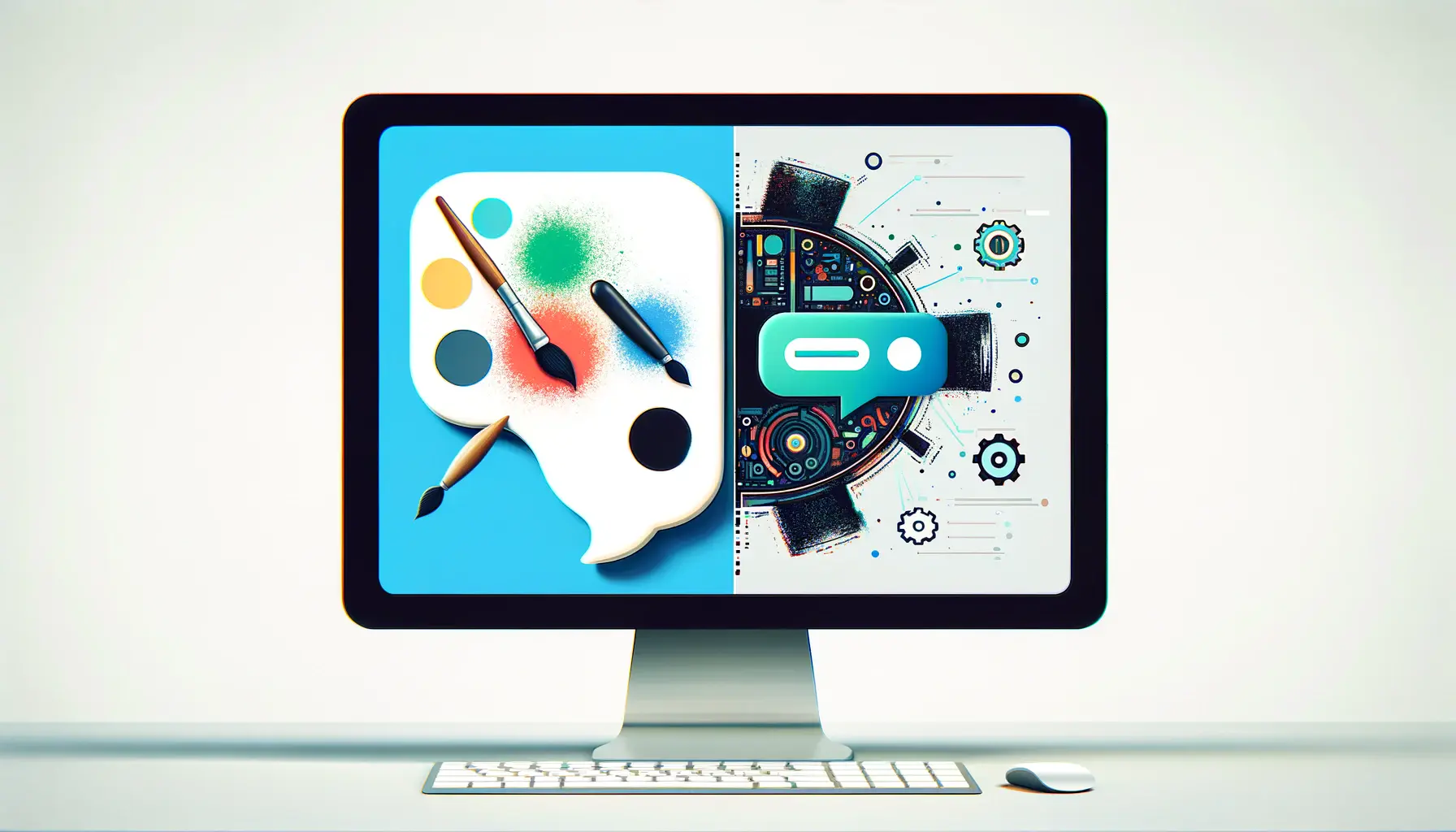The advent of artificial intelligence (AI) technologies has ushered in a new era of creativity and innovation, significantly impacting various sectors, including the workplace.
Among these technologies, DALL-E, an AI program developed by OpenAI capable of generating images from textual descriptions, stands out as a beacon of the transformative potential AI holds for the future of work.
This article delves into how DALL-E, as part of the broader AI revolution, is poised to reshape the professional landscape, emphasizing creativity, efficiency, and the democratization of design capabilities.
As we navigate through the implications of DALL-E on the future of work, it becomes clear that this technology is not just about creating art; it’s about redefining how tasks are approached, solved, and executed in various industries.
From graphic design to marketing, education, and beyond, DALL-E’s influence permeates, offering a glimpse into a future where AI tools not only augment human capabilities but also inspire new ways of thinking and creating.
- Understanding DALL-E and Its Capabilities
- Revolutionizing Design and Marketing
- Optimizing Workflow and Productivity
- Democratizing Access to Creative Tools
- Challenges and Ethical Considerations
- Future Directions and Possibilities
- Expanding the Horizon of Education and Learning
- Embracing the Future with DALL-E
- DALL-E and the Future of Work: FAQs
Understanding DALL-E and Its Capabilities
What is DALL-E?
DALL-E, a portmanteau of the artist Salvador Dalí and Pixar’s WALL-E, is a cutting-edge AI developed by OpenAI that generates images from textual descriptions.
This technology leverages a variant of the GPT-3 algorithm, designed to understand and interpret human language, allowing it to produce complex, detailed, and varied images based on simple or intricate prompts.
The implications of such a tool are vast, offering unprecedented opportunities for creativity and innovation across multiple domains.
The introduction of DALL-E has sparked discussions among professionals and creatives alike, pondering the potential of AI in enhancing creative processes.
By enabling users to generate visual content from textual descriptions, DALL-E democratizes access to artistic creation, making it possible for individuals without traditional artistic skills to bring their visions to life.
This capability is particularly significant in fields where visual content is paramount, such as marketing, design, and digital content creation.
The Impact on Creative Professions
The emergence of DALL-E heralds a transformative shift in creative professions.
Graphic designers, artists, and content creators can now leverage AI to generate preliminary designs or inspire new ideas, streamlining the creative process.
This not only enhances productivity but also allows creatives to explore new artistic avenues, pushing the boundaries of traditional design and artistry.
However, the integration of DALL-E into the creative workflow also raises important questions about the nature of creativity and the value of human touch in art.
While DALL-E can produce images based on specific prompts, the tool’s ability to understand context, emotion, and subtleties of human creativity remains limited compared to the nuanced capabilities of human artists.
Thus, DALL-E serves as a complement to human creativity, offering tools and possibilities rather than replacing the irreplaceable value of human ingenuity.
The role of DALL-E in creative professions underscores the collaborative potential between humans and AI, where technology serves as an extension of human creativity, not a replacement.
Revolutionizing Design and Marketing
The advent of DALL-E is set to revolutionize the fields of design and marketing by offering a tool that can instantly translate ideas into visual representations.
This capability is particularly transformative for industries that rely heavily on visual content to communicate with their audiences.
Let’s explore how DALL-E is reshaping these sectors.
Enhancing Branding Strategies
Branding is an integral part of a company’s marketing strategy, involving the creation of visually appealing content that resonates with the target audience.
DALL-E’s ability to generate images from textual prompts allows marketing teams to quickly create and iterate on branding materials, including logos, banners, and promotional imagery.
This rapid prototyping capability enables brands to adapt and respond to market trends with unprecedented agility.
Speeds up the creative process, allowing for faster turnaround times on projects.
- Enables the exploration of multiple design concepts without the need for extensive manual labor.
- Facilitates A/B testing of visual elements to determine what best captures the audience’s attention.
Transforming Content Creation
Content creation, especially in the digital realm, demands a constant supply of fresh and engaging visual content.
DALL-E empowers content creators by removing some of the traditional barriers to content production.
Whether for social media posts, website graphics, or online advertisements, DALL-E can provide a base from which creators can refine and personalize content to fit their specific needs.
- Reduces dependency on stock photos, offering a unique and customizable alternative.
- Supports the generation of visuals for niche topics that may not be readily available in existing image databases.
- Encourages creativity and experimentation with visual styles and themes.
Implications for Advertising
Advertising is another area where DALL-E’s impact is notably significant.
The ability to generate tailored imagery can lead to more personalized and effective advertising campaigns.
Advertisers can use DALL-E to create visuals that specifically appeal to their target demographic, potentially increasing engagement and conversion rates.
- Allows for the creation of highly targeted ad visuals that resonate with different segments of the audience.
- Enables rapid testing and iteration of ad designs to maximize campaign performance.
- Reduces costs associated with hiring professional photographers and graphic designers for custom ad imagery.
In summary, DALL-E’s influence on design and marketing is profound, offering tools that enhance creativity, efficiency, and personalization.
As we continue to explore the capabilities and applications of this AI, it’s clear that its role in the future of work is not just supportive but potentially revolutionary, paving the way for new methodologies in creative industries.
Optimizing Workflow and Productivity
The integration of DALL-E into professional environments goes beyond enhancing creativity; it significantly optimizes workflow and productivity.
By automating the initial stages of image creation, DALL-E allows professionals to focus on refining and perfecting their projects, thereby streamlining the creative process.
This section examines the specific ways in which DALL-E contributes to workflow optimization and productivity enhancement.
Streamlining Creative Processes
One of the most immediate impacts of DALL-E on workflow is the streamlining of the creative process.
Traditionally, creating visual content from scratch involves a series of time-consuming steps, from conceptualization to execution.
DALL-E simplifies this process by providing a starting point that can be further customized and refined by human professionals.
- Reduces the time spent on conceptual sketches and mock-ups.
- Facilitates rapid prototyping, allowing teams to visualize ideas quickly.
- Encourages iterative design by making it easy to adjust and regenerate visuals based on feedback.
Enhancing Collaboration
DALL-E also enhances collaboration among team members by providing a common visual ground that can be easily shared and discussed.
This is particularly beneficial in remote or distributed work environments, where clear communication is essential for project success.
- Enables remote teams to share visual ideas and feedback without the need for physical prototypes.
- Facilitates a more inclusive design process, allowing non-designers to contribute visual ideas.
- Improves project alignment by ensuring all team members have a clear understanding of the visual direction.
Reducing Operational Costs
Another significant advantage of DALL-E is its potential to reduce operational costs associated with visual content creation.
By automating the generation of initial visuals, companies can save on expenses related to hiring external designers or purchasing stock images.
- Decreases reliance on external graphic design services for initial concept creation.
- Lowers the cost of content production by reducing the need for stock imagery.
- Maximizes the efficiency of in-house design teams by allowing them to focus on high-value tasks.
In conclusion, DALL-E’s role in optimizing workflow and productivity is multifaceted, impacting everything from the speed of project completion to the cost of content creation.
As businesses continue to seek ways to improve efficiency and reduce expenses, the adoption of AI tools like DALL-E becomes increasingly attractive.
By leveraging the capabilities of DALL-E, companies can not only enhance their creative output but also foster a more collaborative, efficient, and cost-effective work environment.
Democratizing Access to Creative Tools
The advent of DALL-E represents a significant leap towards democratizing access to creative tools, making high-quality visual content creation accessible to a broader audience.
This shift has profound implications for individuals and businesses alike, leveling the playing field in industries where visual content is key.
Let’s delve into how DALL-E is changing the landscape of creativity and access.
Empowering Non-Designers
Traditionally, creating compelling visual content required specialized skills and knowledge in graphic design or art.
DALL-E breaks down these barriers by allowing anyone with a creative vision to generate detailed, high-quality images without the need for technical design skills.
This empowerment of non-designers opens up new opportunities for creativity and innovation across various fields.
- Enables entrepreneurs to create their own marketing materials without a design background.
- Allows educators to generate custom visuals for teaching materials, enhancing learning experiences.
- Empowers writers and content creators to bring their stories to life with bespoke illustrations.
By democratizing access to creative tools, DALL-E is fostering a new era of creativity where the only limit is one’s imagination.
Lowering Entry Barriers for Startups and Small Businesses
For startups and small businesses, the cost of creating high-quality visual content can be prohibitive, often requiring significant investment in design services.
DALL-E mitigates this challenge by providing a cost-effective solution for generating custom visuals, thereby lowering the entry barriers for small businesses looking to compete in visually driven markets.
- Reduces initial costs associated with branding and marketing material creation.
- Enables small teams to produce a wide range of visual content in-house, saving on outsourcing costs.
- Facilitates rapid branding iterations, allowing startups to refine their visual identity as they grow.
Encouraging Innovation and Experimentation
The ease of use and accessibility of DALL-E encourages users to experiment with visual content in ways that were previously unfeasible due to skill or cost constraints.
This environment of experimentation is likely to spur innovation, leading to new visual styles, content formats, and applications of visual AI that could influence various industries.
- Sparks new trends in digital art and design by making experimental techniques accessible to all.
- Encourages the exploration of visual storytelling in journalism, education, and entertainment.
- Promotes the use of custom visuals in data visualization, making complex information more accessible and engaging.
In essence, DALL-E is not just a tool for creating images; it’s a catalyst for creative democratization, enabling a wider range of individuals and businesses to participate in the visual culture.
As we continue to explore the boundaries of what AI can achieve in the realm of creativity, DALL-E stands as a testament to the potential for technology to empower and inspire.
Challenges and Ethical Considerations
While DALL-E and similar AI technologies offer immense potential for innovation and efficiency, their rise also poses significant challenges and ethical considerations.
As we integrate these tools more deeply into our workflows and creative processes, it’s crucial to address the concerns they raise regarding originality, copyright, and the impact on the creative industry.
Navigating Copyright and Intellectual Property Issues
The ability of DALL-E to generate images based on a wide array of prompts raises complex questions about copyright and intellectual property rights.
Determining the ownership of AI-generated content, especially when the output is derived from or inspired by existing copyrighted materials, presents a legal and ethical maze that individuals and organizations must navigate carefully.
- Clarifying the legal status of AI-generated images and their eligibility for copyright protection.
- Developing guidelines for the fair use of AI tools in creating content that respects the rights of original creators.
- Implementing mechanisms to prevent the misuse of AI for creating unauthorized reproductions of copyrighted works.
Addressing these copyright issues is essential for fostering an environment where AI tools like DALL-E can be used responsibly and ethically.
Ensuring Originality and Authenticity
The ease with which DALL-E can produce images might lead to concerns over the originality and authenticity of AI-generated content.
As the technology becomes more widespread, there’s a risk that the digital landscape could become saturated with AI-generated images, potentially diminishing the value of human creativity and originality in art and design.
- Establishing best practices for distinguishing between AI-generated and human-created content.
- Promoting transparency in the use of AI tools in content creation to maintain trust and authenticity.
- Encouraging the use of AI as a collaborative tool that enhances rather than replaces human creativity.
Impact on the Creative Industry
The democratization of content creation through tools like DALL-E also prompts a reevaluation of the role of professional artists and designers.
While AI opens up new possibilities for creativity, it also introduces uncertainty about the future demand for traditional creative roles, potentially affecting livelihoods and the structure of the creative industry.
- Exploring new models for valuing and compensating creative work in an era of AI-assisted content creation.
- Investigating the impact of AI on job opportunities and skill requirements in the creative sector.
- Supporting the development of skills that complement AI capabilities, ensuring that professionals can adapt and thrive alongside AI tools.
As we continue to explore the potential of DALL-E and other AI technologies, addressing these challenges and ethical considerations is paramount.
By doing so, we can harness the benefits of AI for creativity and innovation while safeguarding the rights, values, and roles of individuals within the creative ecosystem.
Future Directions and Possibilities
The evolution of AI technologies like DALL-E opens a window into future possibilities that could further transform the creative landscape and work processes.
As we stand on the brink of these advancements, it’s essential to consider the potential directions DALL-E and similar technologies might take and how they could shape our interaction with AI in creative endeavors.
Integration with Other Technologies
One of the most exciting prospects for DALL-E lies in its potential integration with other emerging technologies.
Combining AI-driven image generation with virtual reality (VR), augmented reality (AR), and 3D printing could unlock new dimensions of creativity and application, from immersive art installations to the creation of physical objects directly from AI-generated designs.
- Enhancing virtual and augmented reality experiences with custom, AI-generated visuals.
- Facilitating the design and manufacturing process with 3D models generated from textual descriptions.
- Creating personalized, dynamic content for gaming and interactive media.
Advancements in AI Creativity
As AI technologies continue to evolve, we can anticipate further advancements in the creative capabilities of systems like DALL-E.
Future iterations could offer more nuanced interpretations of prompts, greater understanding of artistic styles, and even collaboration with human artists to co-create works that blend the best of AI and human creativity.
- Developing AI systems that can understand and replicate complex artistic techniques and styles.
- Enabling AI to provide creative suggestions and alternatives, acting as a creative partner to human artists.
- Exploring the potential for AI to generate not just static images but also animations and interactive visual content.
The continuous improvement of AI’s creative capabilities promises to open up new frontiers in art, design, and content creation, challenging our perceptions of creativity and the role of technology in the creative process.
Enhancing Personalization and User Experience
Another promising direction for DALL-E involves leveraging its capabilities to enhance personalization and user experience across various platforms and applications.
From personalized marketing materials to customized user interfaces, the ability of AI to generate tailored visual content could significantly impact how businesses engage with their audiences and how users interact with digital environments.
- Creating highly personalized content for marketing campaigns based on user data and preferences.
- Customizing user interfaces and experiences in real-time based on user interactions and feedback.
- Generating dynamic visual content for websites and apps that adapts to changing contexts and user needs.
The future directions and possibilities for DALL-E and AI in creativity are vast and varied.
As we continue to explore these technologies’ potential, we must also remain mindful of the ethical considerations and strive to ensure that advancements in AI serve to enhance human creativity, foster innovation, and improve our collective experience in the digital age.
Expanding the Horizon of Education and Learning
The transformative potential of DALL-E extends beyond the realms of art and design, promising to revolutionize the way we approach education and learning.
By providing an intuitive interface for generating visual content, DALL-E can serve as a powerful educational tool, enhancing both teaching methodologies and learning experiences.
This section explores the impact of DALL-E on the educational landscape, highlighting its potential to make learning more engaging, accessible, and personalized.
Visualizing Complex Concepts
One of the key challenges in education is conveying complex concepts in a manner that is both comprehensible and engaging to students.
DALL-E’s ability to generate images from textual descriptions offers educators a novel way to visualize abstract ideas, making them easier for students to understand and retain.
- Facilitating the teaching of subjects like science and mathematics by visualizing concepts and phenomena that are difficult to represent through traditional means.
- Enhancing history and social studies lessons with AI-generated visuals of historical events, figures, and cultures.
- Supporting language learning by creating visual aids that illustrate vocabulary and grammatical concepts.
Encouraging Creative Expression
DALL-E can also play a significant role in fostering creative expression among students.
By removing technical barriers to visual content creation, DALL-E allows students to explore their creativity and express their ideas in new and innovative ways, regardless of their artistic skills.
- Enabling students to bring their creative writing to life with custom illustrations.
- Supporting project-based learning by allowing students to create visual representations of their ideas and research.
- Facilitating the creation of digital art and design projects, encouraging exploration and experimentation with visual styles.
DALL-E democratizes access to creative tools in the educational context, empowering students to express their ideas visually and enhancing their learning experience.
Personalizing Learning Materials
The customization capabilities of DALL-E offer exciting possibilities for the personalization of learning materials.
Educators can use DALL-E to create tailored educational content that aligns with their students’ interests, learning styles, and needs, making education more relevant and engaging for each learner.
- Generating custom visuals for lesson plans and educational resources that cater to the diverse interests of students.
- Creating personalized learning aids and study materials that address the specific challenges or requirements of individual students.
- Designing interactive and adaptive educational content that evolves based on students’ progress and feedback.
The integration of DALL-E into educational practices heralds a new era of interactive and personalized learning.
By leveraging the capabilities of AI to generate visual content, educators can enhance the effectiveness of their teaching, cater to diverse learning needs, and inspire a deeper level of engagement and understanding among students.
As we continue to explore the potential of AI in education, tools like DALL-E stand out as beacons of innovation, promising to enrich the educational landscape and transform the learning experience for students around the world.
Embracing the Future with DALL-E
The exploration of DALL-E’s role in the future of work unveils a landscape brimming with potential and possibilities.
As we’ve navigated through the various facets of DALL-E’s impact, from revolutionizing creative professions to democratizing access to creative tools, it’s clear that this AI technology is not just a tool but a catalyst for transformation across industries.
The journey through the realms of design, marketing, education, and beyond illustrates a future where AI and human creativity coalesce, fostering innovation and enhancing productivity.
The Synergy of AI and Human Creativity
At the heart of DALL-E’s impact is the synergistic relationship between AI and human creativity.
This partnership promises to elevate the creative process, offering new ways to visualize, innovate, and express ideas.
The future of work, as shaped by DALL-E, is one where creative professionals are empowered with tools that augment their capabilities, enabling them to push the boundaries of their imagination and create with unprecedented freedom and efficiency.
Challenges and Ethical Considerations
Yet, as we embrace the possibilities, we must also navigate the challenges and ethical considerations that accompany the integration of AI into creative and professional domains.
Issues of copyright, originality, and the impact on the creative industry require thoughtful deliberation and action.
Ensuring that DALL-E and similar technologies are used responsibly and ethically will be paramount in realizing their full potential while respecting the rights and contributions of human creators.
Looking Ahead: A Future Shaped by AI
The future of work, as envisioned through the lens of DALL-E, is not just about the transformation of creative professions but about the broader implications for how we work, learn, and interact.
The potential for DALL-E to enhance education, personalize learning, and make creative expression accessible to all hints at a future where AI technologies play a central role in shaping our societal and cultural landscapes.
- The integration of DALL-E with other emerging technologies could unlock new creative possibilities and applications, from immersive art experiences to innovative design solutions.
- Advancements in AI creativity will continue to challenge our perceptions of art and design, encouraging a reevaluation of the role of technology in the creative process.
- The democratization of creative tools, facilitated by technologies like DALL-E, promises to foster a more inclusive and diverse creative community.
In conclusion, the role of DALL-E in the future of work is multifaceted, offering both opportunities and challenges.
As we move forward, the collaboration between AI and human creativity will undoubtedly continue to evolve, shaping a future where the potential for innovation is limitless.
Embracing this future requires not only technological advancement but also a commitment to ethical practices, ensuring that the journey towards an AI-enhanced world benefits all members of society.
DALL-E and the Future of Work: FAQs
Explore common inquiries about how DALL-E is shaping the future of work, creativity, and beyond.
DALL-E is revolutionizing creative industries by automating image generation, enhancing productivity, and fostering innovation across various sectors.
No, DALL-E is intended to augment human creativity, offering tools that enhance rather than replace the unique insights and skills of human artists.
DALL-E enables rapid prototyping and customization of visual content, making branding and marketing campaigns more agile and personalized.
Key concerns include copyright issues, the originality of AI-generated content, and the potential impact on professional creative roles.
Yes, DALL-E democratizes access to creative tools, allowing individuals without formal design training to generate high-quality visual content.
Educators can use DALL-E to create custom visuals for teaching materials, making complex concepts more accessible and engaging for students.
Future versions of DALL-E may offer deeper creative collaboration, more nuanced understanding of prompts, and integration with other technologies.
Yes, DALL-E can generate tailored educational content, supporting personalized learning experiences that cater to individual student needs.
